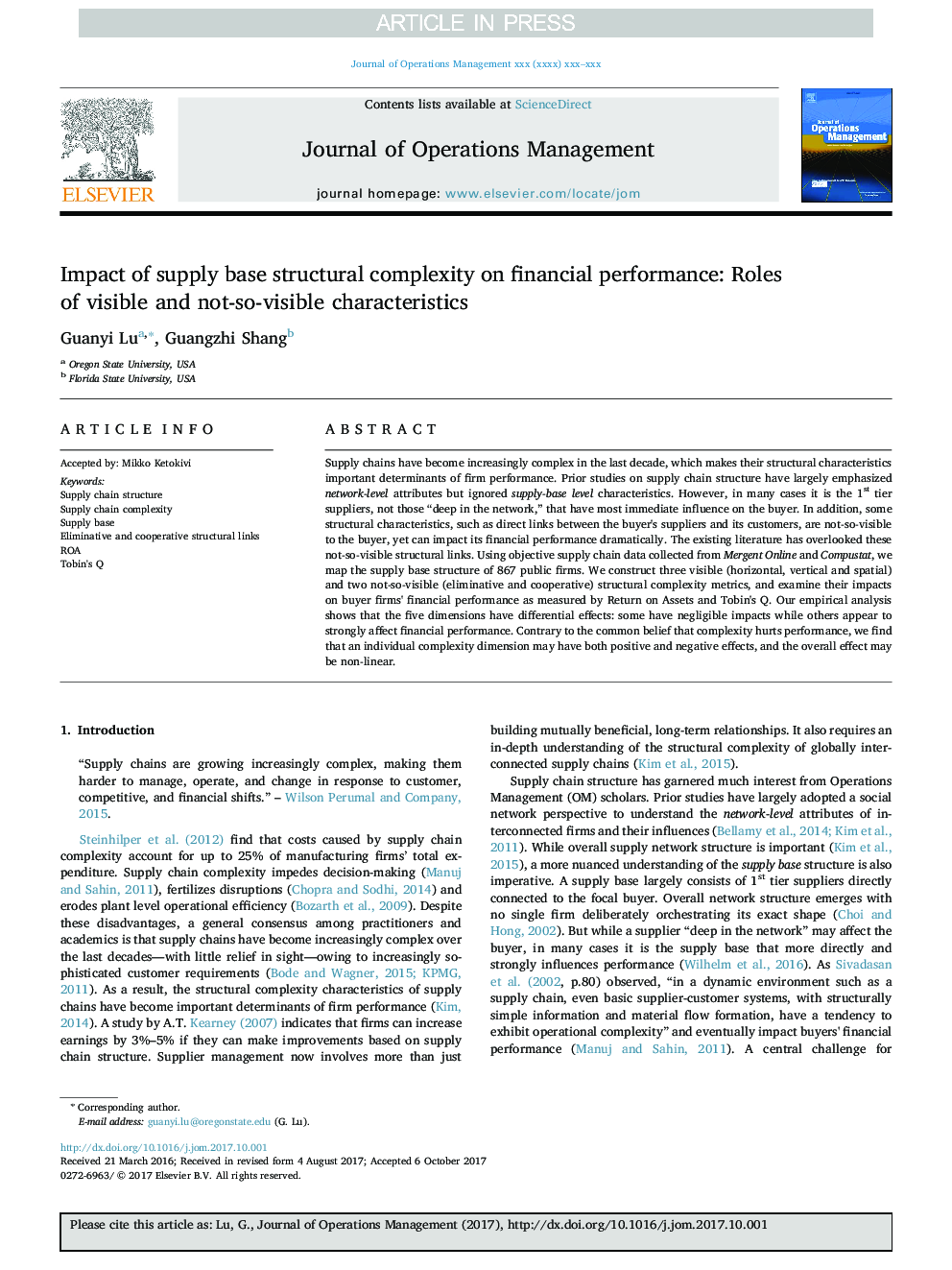| Article ID | Journal | Published Year | Pages | File Type |
|---|---|---|---|---|
| 7436263 | Journal of Operations Management | 2017 | 22 Pages |
Abstract
Supply chains have become increasingly complex in the last decade, which makes their structural characteristics important determinants of firm performance. Prior studies on supply chain structure have largely emphasized network-level attributes but ignored supply-base level characteristics. However, in many cases it is the 1st tier suppliers, not those “deep in the network,” that have most immediate influence on the buyer. In addition, some structural characteristics, such as direct links between the buyer's suppliers and its customers, are not-so-visible to the buyer, yet can impact its financial performance dramatically. The existing literature has overlooked these not-so-visible structural links. Using objective supply chain data collected from Mergent Online and Compustat, we map the supply base structure of 867 public firms. We construct three visible (horizontal, vertical and spatial) and two not-so-visible (eliminative and cooperative) structural complexity metrics, and examine their impacts on buyer firms' financial performance as measured by Return on Assets and Tobin's Q. Our empirical analysis shows that the five dimensions have differential effects: some have negligible impacts while others appear to strongly affect financial performance. Contrary to the common belief that complexity hurts performance, we find that an individual complexity dimension may have both positive and negative effects, and the overall effect may be non-linear.
Related Topics
Physical Sciences and Engineering
Engineering
Industrial and Manufacturing Engineering
Authors
Guanyi Lu, Guangzhi Shang,
